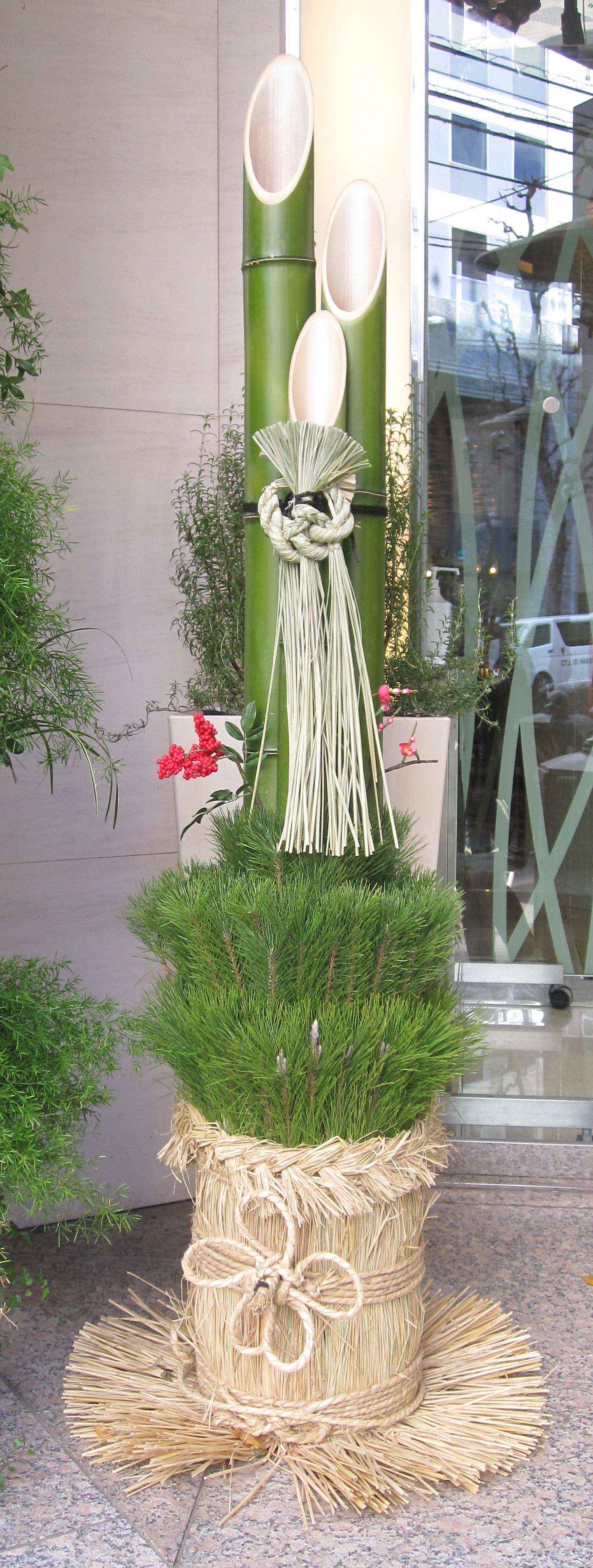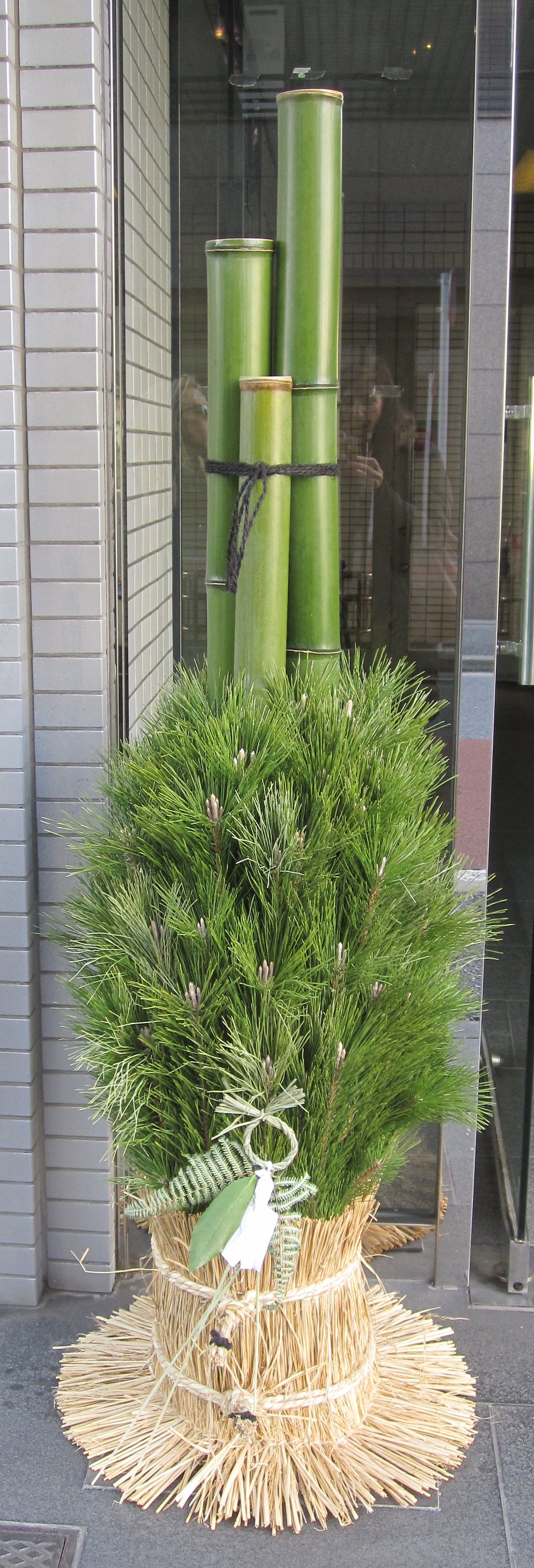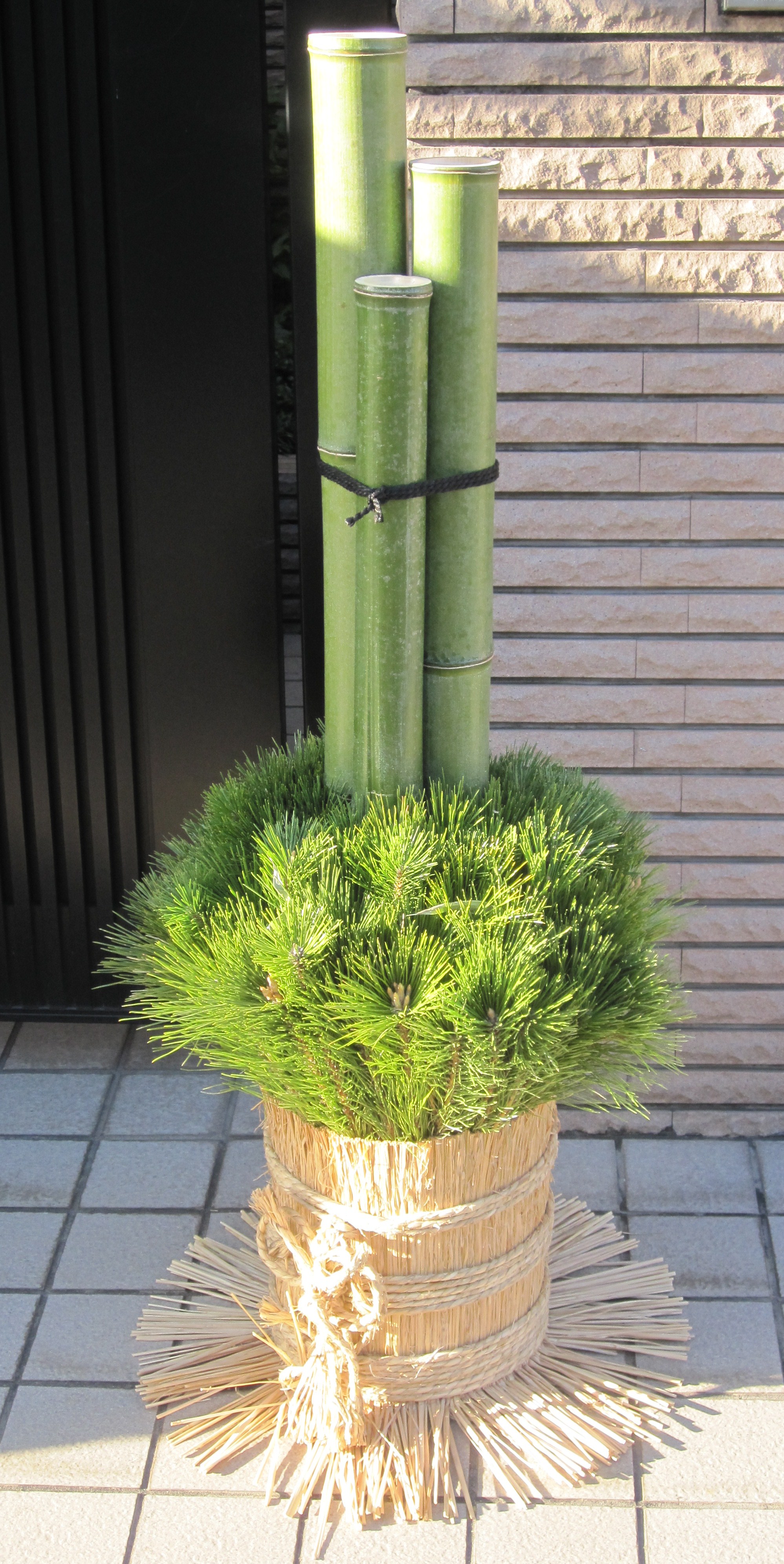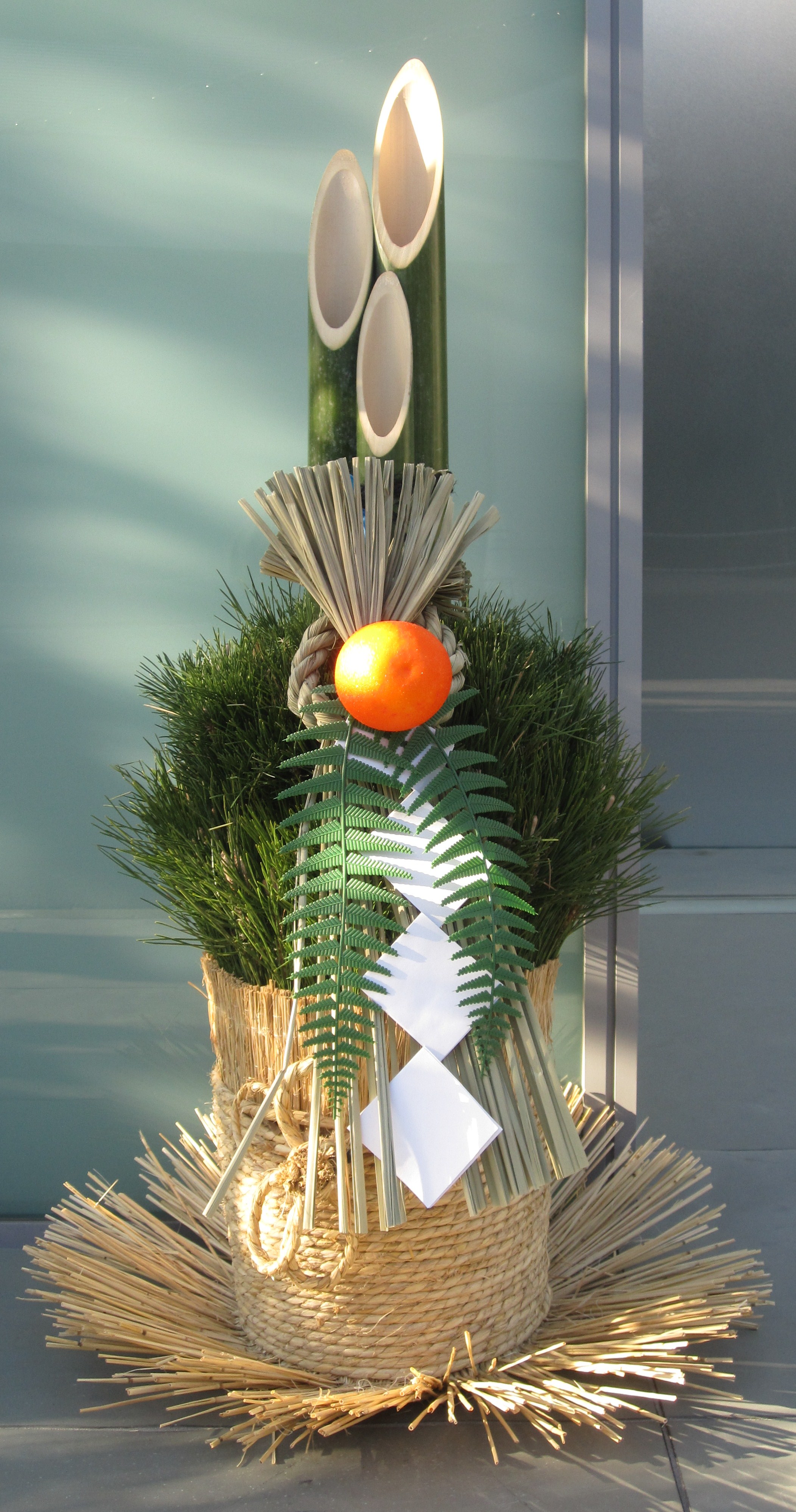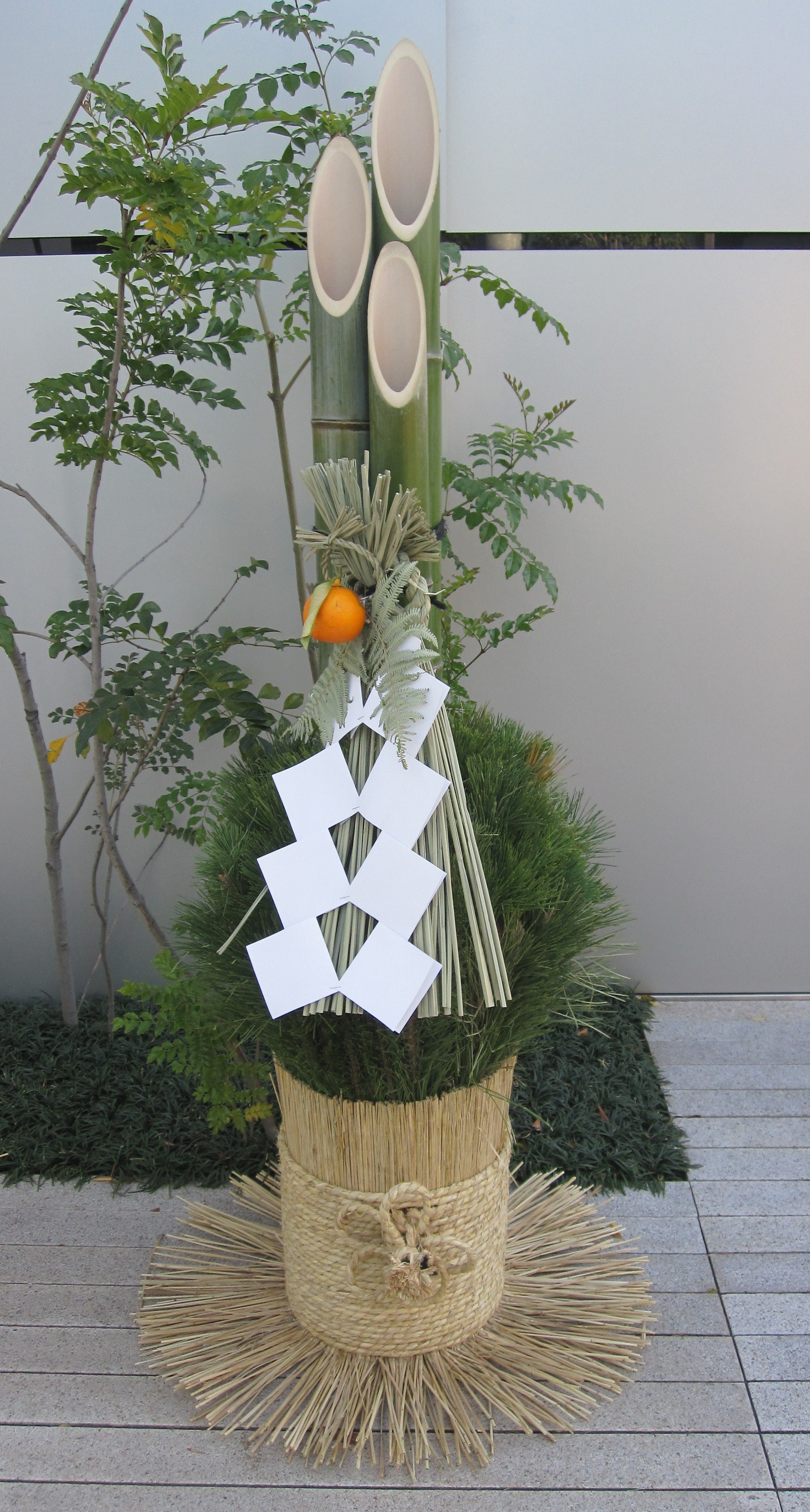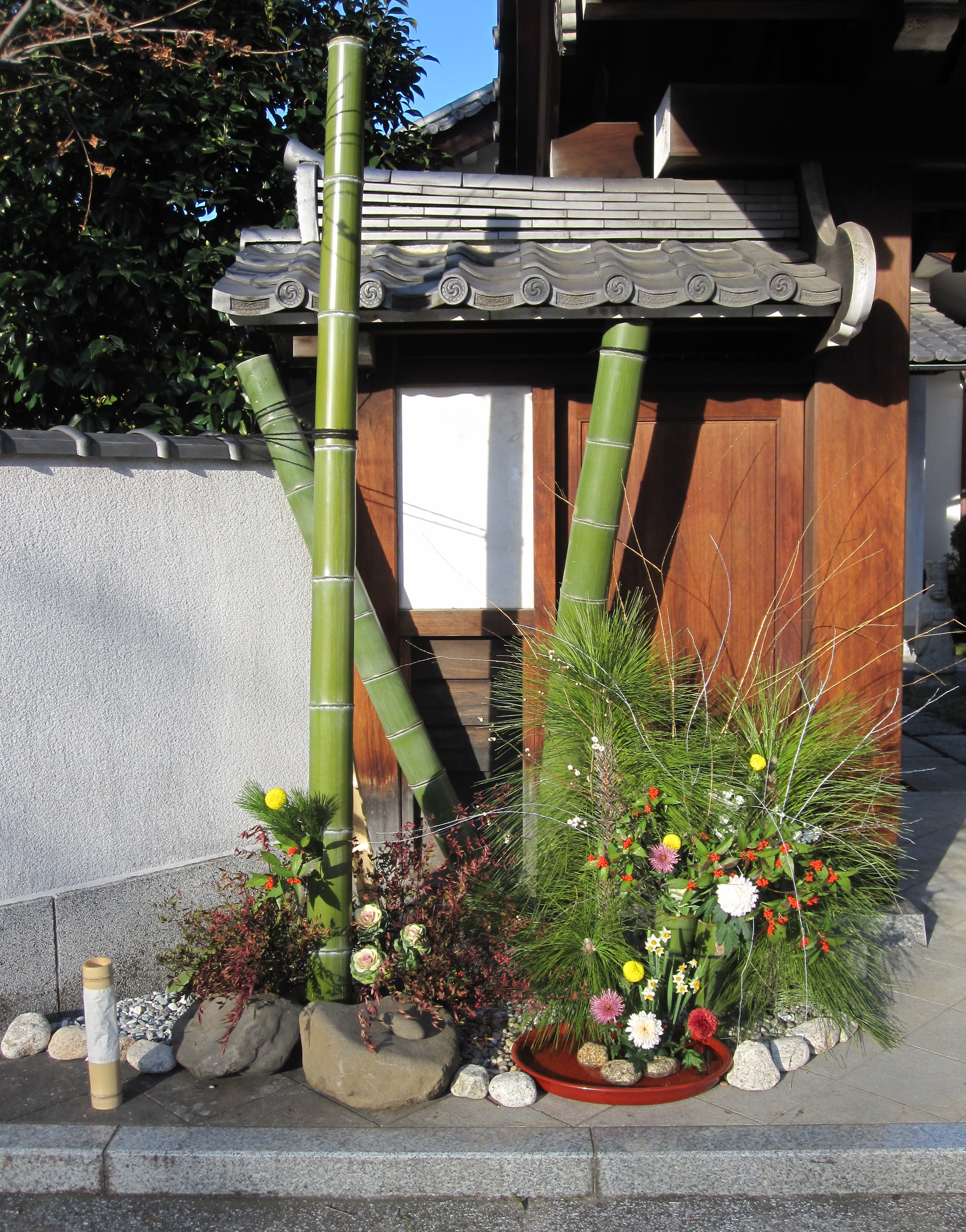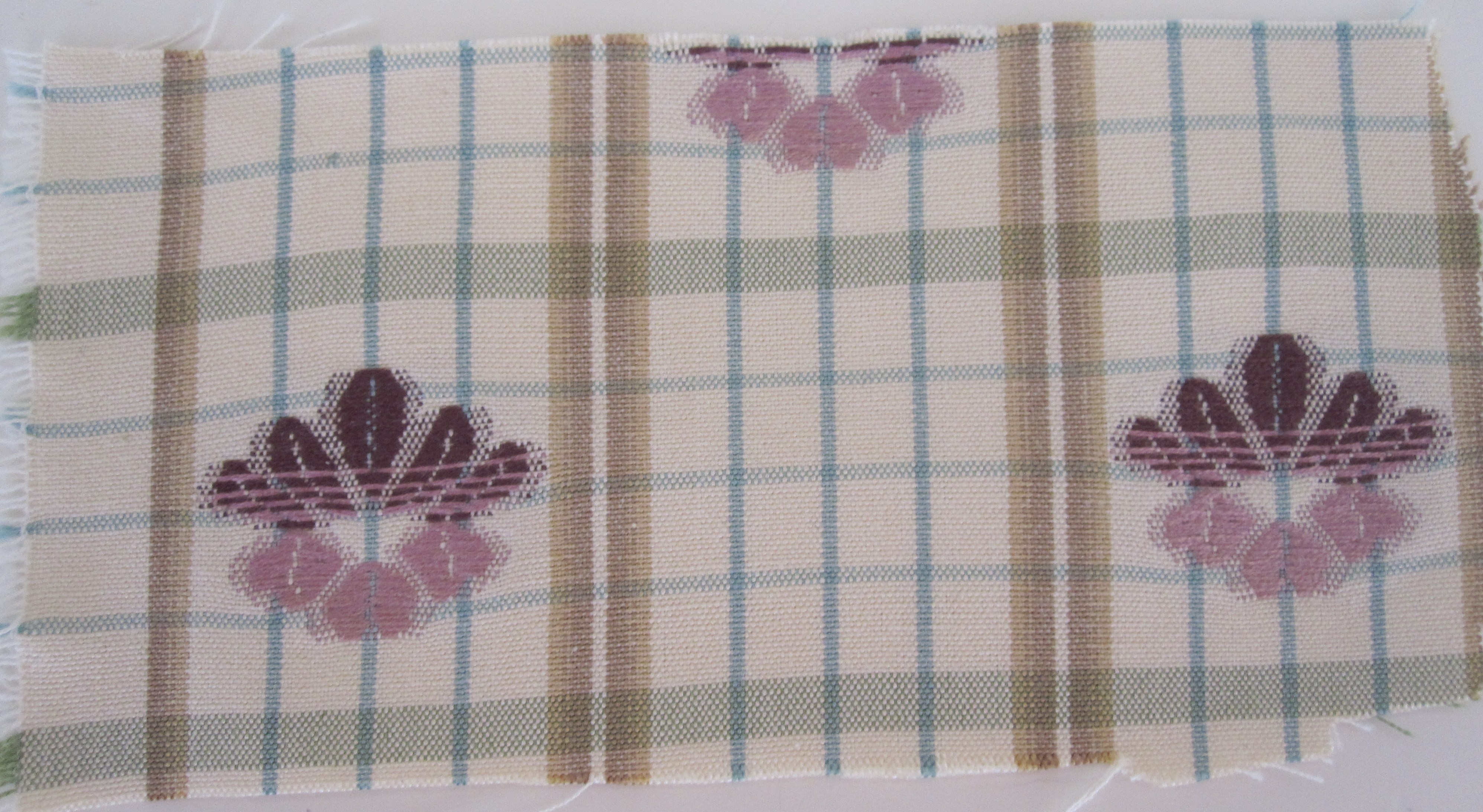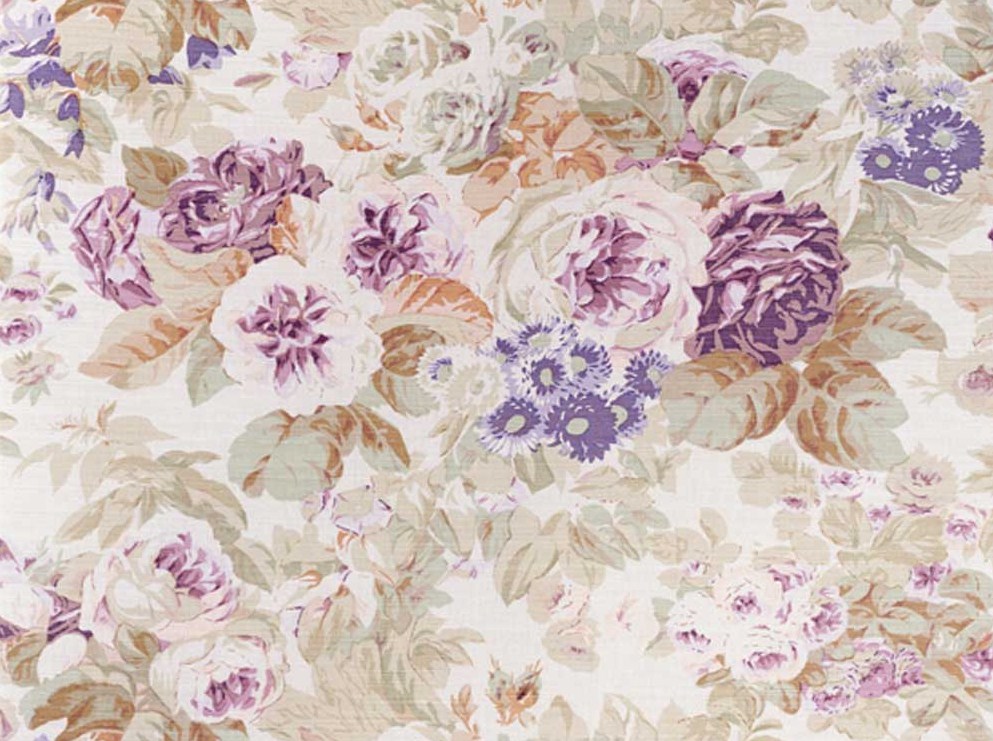kadomatsu
Some Resolutions for 2011 and Bamboo in January

I know it is the thing to do at this time of year, but I am not really one for making public New Years’ resolutions. What I do know for sure is that I have loved blogging and plan on continuing full force. I have relished the writing and the learning of new things. I have enjoyed making new friends and reconnecting with old ones. Every comment and email has made me feel part of a greater whole. Revisiting ideas and items that I haven’t thought about in years has been rejuvenating.
January 2011 will be bamboo month here at Tokyo Jinja, both in topic and spirit. Traditional Japanese still place pairs of kadomatsu made of bamboo and pine in front of their house during New Years for luck and good fortune.

Bamboo symbolizes strength, endurance and resilience as it bends readily but doesn’t break easily. It is also one of the fastest growing plants in the world making it an environmentally sustainable and attractive building material. Bamboo, along with pine and plum blossom, represents one of the “Three Friends of Winter” as a design motif on everything from textiles to gardens. So watch for posts on these subjects as well as 19th century faux bamboo furniture, Aesthetic Movement silver patterns, contemporary bamboo art from Japanese masters, green room inspiration, ikkanbari from artist Lisa George of Paper Glue Bamboo and more.
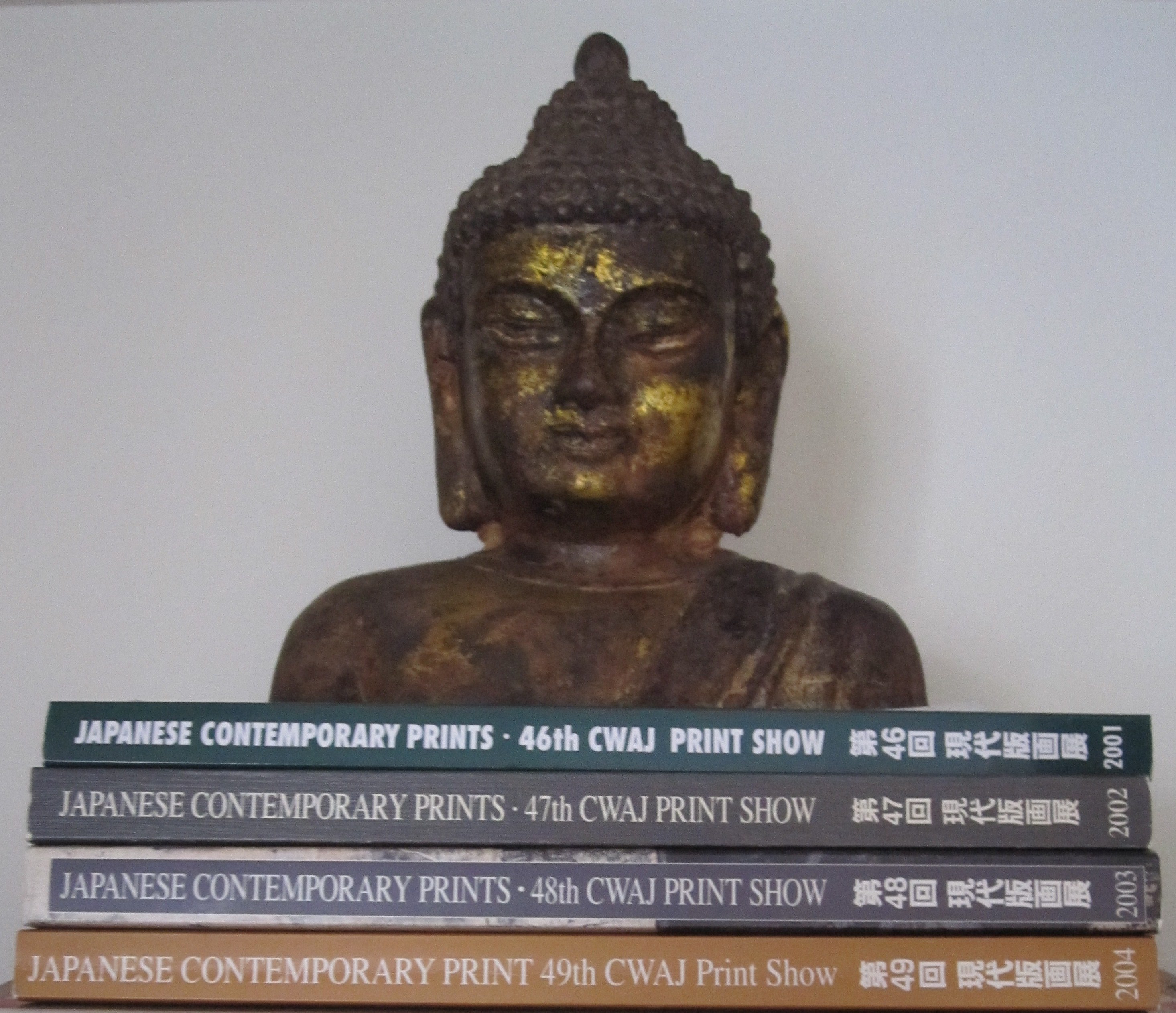
New Year’s at The New York Times brought a great essay on the back page of the magazine entitled “Starter Buddha,’” adapted from Susan Conley’s new memoir “The Foremost Good Fortune,” which is being published next month. The essay is a pitch perfect piece on buying a “fake” buddha in a big Beijing flea market. The book also looks like a must read, especially for those of us living the expat life in Asia as it tells the tale of their family’s move from Maine to China in 2008 and her subsequent battle with cancer. On the eve of a new year, it is always good to be reminded of and thankful for the gift of good health. I’ll also be headed to Hong Kong this winter, so I’ll finally be answering some of your questions on how to know if something is “real” or “fake” as I tackle the Chinese antique stores and markets.
I want to recommend an outing to the Setagaya Boro-ichi (rag fair) on January 15th and 16th. Held in one form or another for over 400 years and now every December and January on those dates, it is a great traditional market experience. For more details and information, take a look at this article in The Japan Times. I will also be updating the “Shrine Sale” tag at the top of the blog to have current information for winter and spring events, and introducing some new sales and antique shows.
I have heard from a lot of you that you like some of the more personal posts and updates on our renovation and decoration. In that spirit, I want to share an exciting idea for the entrance area to the beach house. Under the window, in this empty space, we knew we wanted a bench of some sort to sit and put on shoes as well as to pull up to the dining table when we have many guests (my table has 12 leaves and can open to almost the full length of the dining room/living room). In the summer the front door on the left of the photo is always open, so we don’t think much about this space, but this winter, with the door closed, it really functioned as part of the living room.
As I was flying back to Tokyo on Monday, I picked up the February issue of House Beautiful with this charming bench by Alexandra Angle on the front cover. A bench like this is the perfect solution. We are now so Japanese that we never (and will never again) wear shoes in the house. The design of this bench, with the bar on the bottom, gives us a place to tuck shoes in, keeping them less visible and neat. The other great take-way from the photo is the loose pillows that make it a comfortable place to sit, as if it was a small settee, without having a permanent back. So it can function as a bench, as a couch, and I could even see the girls stretching out here to read.
I have five yards of this adorable Cowtan & Tout Kemerton Check (another great eBay find) that is perfect to upholster it in.
And I could use my last piece of my beloved Bennison Faded Floral that I have been saving for a pillow.
So my dear readers, thank you for your support and encouragement. I would love to hear what you would like to see me write about this year, whether it be questions you want answered or features you’d like to see more of. And please keep those comments and emails coming!
Image credits: 1. A.N. Hudson, 2-4, 6. me, 5. House Beautiful February 2011 photo credit: Victoria Pearson, 7. Bennison
By tokyojinja in Books, Movies & TV, Design Motif, Expat Life, Interior Design, Renovation and Decoration Report, Shrine Sales and Flea Markets, Textiles Tags: Alexandra Angle, bamboo, Bennison, boro-ichi, Buddha, Cowtan & Tout, fabric, kadomatsu, New Years Resolutions




